Nine Days With Mary MacKillop Novena
July 29, 2020These nine days will offer an opportunity to pray and reflect on scripture, Mary MacKillop and your own lives, all within your own time.
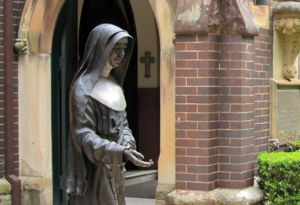 Friday 31 July marks the beginning of our Novena – a time when we can reflect on how the Scriptures, Mary MacKillop’s life and our life intertwine to encourage us in all that we do.
Friday 31 July marks the beginning of our Novena – a time when we can reflect on how the Scriptures, Mary MacKillop’s life and our life intertwine to encourage us in all that we do.
As this Novena is online – you might like to form a group or two to share in this retreat together.
Thank you for praying together as we look forward to celebrating the feast day of Saint Mary MacKillop (Saturday 8 August).
Day One, 31 July: Opening To Our Potter God
- Day One: YouTube version (compatible with all devices)
- Day One: PDF version (suitable for iPad, Android and PC users)
- Day One: PowerPoint version (best suited for those using a PC)
Day Two, 1 August: Becoming Good Soil
- Day Two: YouTube version (compatible with all devices)
- Day Two: PDF version (suitable for iPad, Android and PC users)
- Day Two: PowerPoint version (best suited for those using a PC)
Day Three, 2 August: Becoming Light for the World
- Day Three: YouTube version (compatible with all devices)
- Day Three: PDF version (suitable for iPad, Android and PC users)
- Day Three: PowerPoint version (best suited for those using a PC)
Day Four, 3 August: Becoming Salt for the Earth
- Day Four: YouTube version (compatible with all devices)
- Day Four: PDF version (suitable for iPad, Android and PC users)
- Day Four: PowerPoint version (best suited for those using a PC)
Day Five, 4 August: Encountering God
- Day Five: YouTube version (compatible with all devices)
- Day Five: PDF version (suitable for iPad, Android and PC users)
- Day Five: PowerPoint version (best suited for those using a PC)
Day Six, 5 August: Loving Tenderly
- Day Six: YouTube version (compatible with all devices)
- Day Six: PDF version (suitable for iPad, Android and PC users)
- Day Six: PowerPoint version (best suited for those using a PC)
Day Seven, 6 August: Acting Justly
- Day Seven: YouTube version (compatible with all devices)
- Day Seven: PDF version (suitable for iPad, Android and PC users)
- Day Seven: PowerPoint version (best suited for those using a PC)
Day Eight, 7 August: Walking Humbly
- Day Eight: YouTube version (compatible with all devices)
- Day Eight: PDF version (suitable for iPad, Android and PC users)
- Day Eight: PowerPoint version (best suited for those using a PC)
Day Nine, 8 August: Feast Day
- Day Nine: YouTube version (compatible with all devices)
- Day Nine: PDF version (suitable for iPad, Android and PC users)
- Day Nine: PowerPoint version (best suited for those using a PC)
So Small a Beginning: Part 4
July 8, 2020Sr Marie Foale speaks about the beginnings of the Institute of St Joseph for the Catholic education of poor children.
She believes that as a young Josephite growing up, she had a sense that one day Mary MacKillop and Julian Tenison Woods had made a spontaneous decision to found an order.
Reflection on Mary MacKillop
Mary MacKillop Continues to Make a Difference.
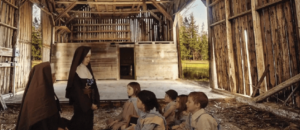
By the end of 1882 we had a foundation in the south coast of New South Wales, Albion Park. Archbishop Vaughan asked us to take over St. John’s School in Kent Street, Sydney. The people were very poor around Kent St, which was ‘a scene of much human misery’. Every day one of the Sisters cooked a substantial meal for the children and a hot drink was ready for them when they arrived at school. Even on Sundays the sisters cooked breakfast for the children and their parents. Our sisters truly were servants for the poor.
Extract from ‘The Letter under the Pillow‘ by Clare Aherne (2016) Chapter 11, pp. 59-60. Carrowmore Publishing Ltd, Ireland.
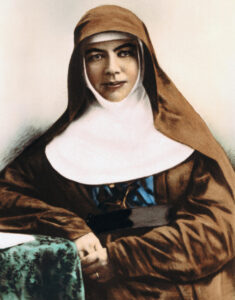
Mary MacKillop was a woman who championed the rights and needs of the poor in the community. Mary and the early sisters worked exceedingly hard to make a difference to the lives of the deprived. It seems remarkable that the sisters were able to provide such sustenance and assistance when they too relied on Providence. No doubt they sought out donations and went begging for food to enable this marvellous ministry to the poor.
Mary and the Sisters also knew suffering and death.
Let us reflect…
- What feelings well up in you when you think of Mary’s generosity in these early days?
- The present COVID-19 crisis paints a grim picture of hardship, sickness and death in the community.
What has affected your life during this time?
Have you been able to help others cope with endure their plight? - Are we able to extend kindness to our neighbours of all cultures?
Let us pray.
Michele Shipperley rsj
Image:
[1] The Story of Mary MacKillop a short film by Holy Family Primary, Granville. Obtained from Cath Family.
Reflection on Mary MacKillop
June 8, 2020In 1873-1874 Mary travelled from Rome and then to London where the McDougalls invited her to stay at their house in Clapham Park and make herself at home during their absence. Mary then travelled to Paris and to her ancestral home the Braes of Lochaber in Scotland.
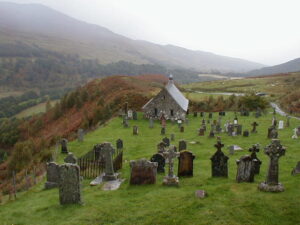
From there she returned to Fort William, where illness delayed her again for a few days before she could start for Fort Augustus. She was overjoyed to meet on the canal steamer the priest who had consoled her in her loneliness at Versailles. He paid her expenses and handed her over to her relative, Dean MacDonald of Fort Augustus, with whom she then stayed for three days. The story was the same everywhere – helpful priests and kindly welcomes in convents. … Fr Bissett gave her soul ‘the help and encouragement it sometimes so sadly needed.’
Extract from ‘Mary MacKillop: An Extraordinary Australian’ by Paul Gardiner sj (1993) pp. 140-141. E J Dwyer Pty Ltd Australia.
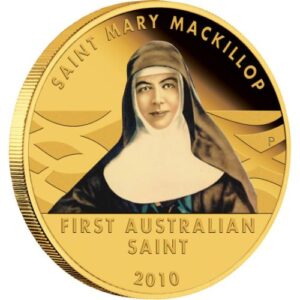
Let us ponder on Mary’s life during the long wait to hear from Rome about the future of the congregation.
- Imagine Mary’s delight and relief on meeting her relatives and visiting her ancestral home.
- What are your thoughts about Mary’s choice to move from comfort to cheap and convenient lodgings?
- How does Mary’s humour, devotion and resilience speak to you in this vingnette?
Mary MacKillop Saint for Australia and the world, pray for us.
Michele Shipperley rsj
Image sources:
[1] Cille Choirille Church and Graveyard by Dave Fergusson obtained from Wikimedia Commons. .
[2] Saint Mary MacKillop commemorative coin obtained from The Perth Mint Australia website.
So Small a Beginning: Part 3
Sr Marie Foale speaks about the beginnings of the Institute of St Joseph for the Catholic education of poor children.
She believes that as a young Josephite growing up, she had a sense that one day Mary MacKillop and Julian Tenison Woods had made a spontaneous decision to found an order.
So Small a Beginning: Part 2
May 8, 2020Sr Marie Foale speaks about the beginnings of the Institute of St Joseph for the Catholic education of poor children.
She believes that as a young Josephite growing up, she had a sense that one day Mary MacKillop and Julian Tenison Woods had made a spontaneous decision to found an order.
Reflection on Mary MacKillop
Paul Gardiner sj writes about Mary MacKillop’s experiences of being away from her family, friends and Sisters of Saint Joseph while on her overseas journey.
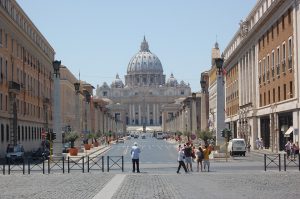 The physical elements in this poor health would have been reinforced by worries about her mission, the mixed success of her begging, the unpleasantness of cold refusals, uncertainty about Roman approval of the Institute, separation from those she loved, and concern about what was happening in Australia. Anxiety about travel arrangements, changing trains, long waits, the tedium of the travel itself, uncertainty about accommodation are things even a person in good health can find something of an ordeal.
The physical elements in this poor health would have been reinforced by worries about her mission, the mixed success of her begging, the unpleasantness of cold refusals, uncertainty about Roman approval of the Institute, separation from those she loved, and concern about what was happening in Australia. Anxiety about travel arrangements, changing trains, long waits, the tedium of the travel itself, uncertainty about accommodation are things even a person in good health can find something of an ordeal.
Kindness and generosity touched Mary in a way she never forgot. She took care to keep in touch by letter with the various priests who had helped her during the ‘sweet string of Providential events’ in Scotland. On the other hand, she was sensitive to the coldness of some she approached for assistance. She did not take it as a personal affront but could not help reflecting that it was the rich, not the poor who refused her: ‘No welcome for the beggar from the rich ones from Edinburgh.’ She was more concerned about their deafness to the teachings of their religion than about being rejected. But it would be wrong to say that people with money never helped her. The McDougalls, Mrs Vaughan, Lady Gordon, and a number of people she met through them, became not only friends but also good benefactors.
Extract from ‘Mary MacKillop: An Extraordinary Australian’ by Paul Gardiner sj (1993) p. 144. E J Dwyer Pty Ltd Australia.
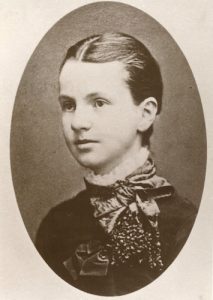
While Mary’s concerns did not revolve around social distancing or imposed isolation, she keenly felt the separation from the Australian scene and those she supported and loved.
Mary was only thirty-one when she undertook this enormous challenge and was recognised as the woman in the black dress. This journey was a major ordeal for Mary to cope with alone. The scenario Gardiner has painted for us is one of a strong and heroic woman in isolation.
- The list of challenges Mary faced alone is a lengthy one. During this time of social distancing, is there something in Mary’s story that rings true for you as a comfort?
- Mary understood what poor health was like. In times of worry, anxiety and illness how did Mary seek support? What gives you strength?
- Many of us cannot physically be with our loved ones. We are fortunate to have many forms of social media to assist us to make contact. Is there a person who comes to mind when you reflect on someone needy or with few friends?
Let us reflect on Mary MacKillop’s outstanding courage and heroism as we pray that we may model the tenacity and faithfulness that Mary lived so strongly.
Michele Shipperley rsj
Photo of Vatican titled ‘Architecture City Travel’ by Paula11767 obtained from Pixabay. Used with permission.
What does Mary MacKillop Have to Say to us These Days?
The over-arching news these days concerns the impact of Coronavirus (COVID-19) on each of us.
Panic abounds as a result of a plethora of notices from government, local agencies and many others. Frequently, there has been pandemonium in shopping centres where an atmosphere of virulent fear results in panic buying and hoarding. Often panic leads to a focus on someone or something inane. In this pandemic the panic lead to shortages of goods, most surprisingly toilet paper. Who would have thought that the search for this particular, usually insignificant, item would have called forth the best and worst in so many people! In addition to dealing with shortages, there has come into being serious limits to our right to move freely, to go about normal business. In varying degrees, we are forced to live in isolation which engenders fear as well as pain. Conversely, isolation can breed its own joys and creativity.
Easter week reminded us powerfully of pain, isolation and fear all embodied in the women who went to the tomb. The Angel told them “do not be afraid!” Their pain gave way to hope and, later, joy in knowing that Jesus had risen, was alive and had visited them.
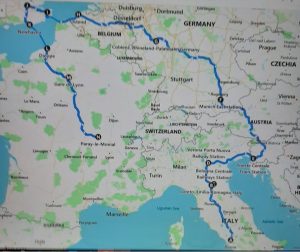
I was drawn to read again the excerpts from Mary MacKillop’s diary from August to mid-October 1873. Mary had been in Rome to endeavour to have the Constitutions approved. The revised Constitutions were eventually completed with the assistance of several priests and sent to Pope Pius IX for approval. It was expected that the process would take quite some time. The heat of Rome had been burdensome for Mary who attributed much of her frequent illness to it. Her fledgling congregation was uppermost in her mind together with a deep desire to obtain materials for the schools, learn about the methodology in Germany and, perhaps, find some young women to join her. On advice, she decided to leave Rome, visit some schools and make her way to London depending on friends and the Providence of God to provide the means to do so.
On August 1 she set out on a journey that was truly formidable in that era. She left Rome by train and visited the Holy House at Loreto spending two days there. She then travelled to Bologna where she arrived at midnight, stayed in the station waiting room and left at 3.00am for Verona arriving there at 9.00am. She spent that day also in the waiting room and left at 3.30pm for Trieste where she arrived at 6.00am next day.
The Convent, where she hoped to spend the day, could not accommodate her necessitating her to go elsewhere. Compounding her dilemma was the fact that she did not have sufficient money to complete the journey. That afternoon a kind lady took her to Rev Baron von Obercamp from whom she borrowed the money to continue her journey. She left Munich at 6.30pm to catch the train to Coblentz where she arrived at 9.00am next morning. She remained at Coblentz for a week “with the kind sisters” visiting schools, noting teaching methods and obtaining school materials from suppliers. Satisfied with her experience there, Mary set out to make her way to Dover to connect with friends in London. As was customary when crossing borders there were custom checks. At the Belgian border, the train stopped at Verviers where she had her bags examined. Being alone and unfamiliar with the station, she took the wrong train and found herself in Brussels. Mary wrote, “after a weary journey got at last to Ostend about 9.00pm. Had to stay the night in the Hotel.” Next morning, she caught a steamer to Dover and then the train to London to join friends – friends who spoke her language and cared for her, thus somewhat alleviating her feelings of isolation…
Please continue reading below:
Read the whole article here (PDF)
Map of Mary MacKillop’s Journey from in 1873 (PDF)
Maria Casey rsj
